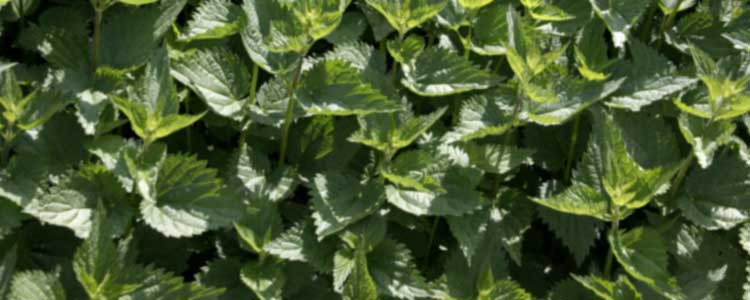 Approximately 43 million Americans are caught within the grasp of some kind of arthritis or joint issue, causing them all sorts of painful experiences. And few people will make it into a ripe old age without joining the fold. Continue reading, in case you happen to currently find yourself in such a situation. Within this informative article, we’ll analyze 16 of the top natural remedies for joint pain that may relieve your distress and provide you with more control of your own life. Let’s get started.
Approximately 43 million Americans are caught within the grasp of some kind of arthritis or joint issue, causing them all sorts of painful experiences. And few people will make it into a ripe old age without joining the fold. Continue reading, in case you happen to currently find yourself in such a situation. Within this informative article, we’ll analyze 16 of the top natural remedies for joint pain that may relieve your distress and provide you with more control of your own life. Let’s get started.
7 Diet and Exercise Remedies

Eat More Carrots
Are you aware that carrots were used (and still are) for hundreds of years in Chinese medicine as a powerful treatment for aching joints? Cooked, fried, steamed, raw, in a stew, enjoy them in whatever way you prefer, but enjoy them often and reap the benefits.
Eat Some Fenugreek Seeds
This happens to be enjoyed as a preferred treatment by quite a few people around the globe. They taste somewhat bitter when you chew them if you’ve never had them before, so you’ll have to slowly get used to them.
Drink More Water
One of the advantages of consuming more water is that it really keeps the body hydrated and softens cartilage. Water makes it possible to keep an adequate blood volume in one’s system so that nutrients can move through the blood and into the joints. Additionally, it helps to remove waste from your joints, making them not as prone to painful flare-ups.
Eat More Onions
Onions are a renowned anti-inflammatory food. They contain phytochemicals that enhance one’s own immune system. A study confirms that fresh onions have an analgesic effect like that of morphine.
Do Yoga
This helps stretch out your aching joints, as well as opens up stiff muscles in the back and shoulders. Weight-bearing exercises may make things worse in the event that your knees hurt. Therefore, gentle yoga exercises may help you more than any other exercise.
Massage the Joint
A mild massage with warm oil relaxes muscle tissue, enhances blood circulation, and eases inflammation. Consequently, your joints feel better.
Acupuncture
Lots of individuals discover that acupuncture helps alleviate the pain that is occurring in their joints; several studies have found quite a few benefits in the process. While it isn’t useful for everyone, it does help many individuals out there. Try it and see if it works for you.
9 Herbs and Supplements for Your Joint Pain

Burdock Root
Among the best things that you can do to help the pain in the joints is to increase your consumption of fatty acids. Burdock root has a ton of fatty oils, tannins, and sterols that help it to have a big reputation as a powerful anti-inflammatory. You can drink it as a tea by boiling it for about 10 minutes, straining it and then drinking it before it cools completely. You could also take the herb in capsule form if tea isn’t your thing; just make sure you get it from a quality, reputable company.
Flax Seed
Flaxseed is just one of the greatest vegan sources of Omega-3 out there. Omega 3s are crucial for a powerful immune-system and for combating inflammation. Note: do not warm or prepare seeds or oil.
Turmeric
Turmeric is an effective pain-reliever and an incredibly effective anti-inflammatory herb. It comprises at least two compounds (curcuminoids and curcumin) which reduce inflammation. Incidentally, this anti-inflammatory effect is likely why turmeric is frequently suggested for helping in the fight against cancer, cataracts, and Alzheimer’s.
Although you can absolutely add this spice to your day-to-day diet, you’ll have to have turmeric in supplement form as a way to see the total medicinal benefits. The herb may also be used topically to alleviate pain.
Licorice Root
Licorice acts just like your system’s own natural corticosteroids (which decrease inflammation). Licorice root reduces free radicals in the site of inflammation and inhibits the production that is included within the inflammatory process. Glycyrrhizin is the part in licorice which obstructs and alleviates inflammation. This herb can be used in supplement form or just as a tea.
Cayenne
Well-known for its spicy hot flavor, cayenne makes an excellent external ointment that alleviates pain. Rubbing cayenne in the affected region helps to distract the nerves from the more serious joint pain. Arthritis pain can be reduced by repeated topical applications of cayenne pepper to a certain degree.
Stinging Nettle
This is a herb that is useful for virtually anything. Stinging nettle is really a fantastic herb for anyone with arthritis, gout, and general joint pain.
A side note: many arthritis sufferers have discovered that striking the inflamed joint using an original cutting from the plant helps reduce joint pain (blood is drawn by the stinging part of the nettles for the joint, alleviating pain and inflammation). I am aware this seems like a very bizarre thing, however if you’re feeling bold consider giving it a shot.
Fish-oil
Digested fish-oil breaks down into hormone-like compounds called prostaglandins, which decrease inflammation. In a single study about 40% of rheumatoid arthritis sufferers who took cod liver oil daily reduced their Non-steroidal anti-inflammatory drug use by over a third, Scottish scientists have documented. Individuals with back and neck pain have fared even better. After approximately ten weeks, almost two-thirds could stop taking Nonsteroidal anti-inflammatory drugs completely in a published University of Pittsburgh research.
Glucosamine
Glucosamine is maybe the most famous joint supplement. Costs vary, but you typically will be able to find affordable prices online. The body uses glucosamine to make glycosaminoglycans — important parts of joint cartilage. Supplementing with glucosamine can thus avoid joint damage and assist the recovery of damaged cartilage.
Chondroitin Sulfate
Chondroitin sulfate is the glycosaminoglycans in joint cartilage and offers resistance to compression. This supplement is commonly used in conjunction with glucosamine for maximum benefits when it comes to joint problems.
Additional Arthritis Information
For those with arthritis, there are over one hundred different kinds of arthritis, with a range of causes. Among the more widely-known types are osteoarthritis, gout, rheumatoid arthritis, and lupus. Osteoarthritis is definitely the most typical kind.
Osteoarthritis is chiefly marked by means of a breakdown and decrease of joint cartilage. The tissue that cushions and separates the bones in a joint is known as cartilage. A lot of people experience osteoarthritis in their later years.
Rheumatoid arthritis, though, isn’t an inescapable facet of aging. For reasons unknown, the synovium, or lining, of the joint becomes inflamed, leading to swelling, malady, warmth, and various inflammation. Signs change from person to person. The mildest type of rheumatoid arthritis causes mild joint discomfort. More frequently, though, the inflammation causes painful, stiff, swollen joints, as well as acute joint injury. Rheumatoid arthritis will cause body wide symptoms like exhaustion, fever, and fat loss.
In the event of gout, needleshaped uric acid crystals accumulate in the joints, because of fault within the human body’s capability to metabolize, or process, purines. Purines are naturally-occurring compounds found in specific foods like liver and anchovies. The disorder chiefly targets heavy, inactive guys older than 35.
Regardless of the cause of your joint pain, just know that there are things you can do. As all of our bodies are different and have different needs, not every remedy works for every person. If one of the above options doesn’t work for you (and you’ve given them time to work), then try another and see what works best for you.
